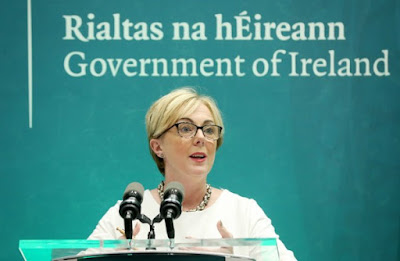Minister for Health Simon Harris TD has signed the commencement orders and regulations for Parts 2 and 3 of the Children and Family Relationships Act 2015.
Regulations under Parts 2 and 3 of the Act will come into effect on 5 May 2020.
Parts 2 and 3 of the Children and Family Relationships Act 2015 are the responsibility of the Minister for Health, are concerned with the rights of children conceived through the use of donor embryos or gametes.
These rights are provided for in Parts 2 and 3 of the Act by:
Clarifying the legal parentage of donor-conceived children.
Ensuring that all parties to a donor-assisted human reproduction procedure have provided their consent and are aware of their rights and responsibilities;
The donor-conceived child’s right in accordance with the UN Convention on the Rights of the Child to know his or her genetic identity
The vindication of this right will be achieved through the prohibition of anonymous gamete and embryo donation and by the establishment of a National Donor-Conceived Person Register. The Register will enable a donor-conceived child who has reached the age of 18 to access personal "identifying" information on the relevant donor and any genetic donor-conceived siblings she or he may have and, if she or he so wishes, to seek to contact those individuals.
Commencement of Parts 2 and 3 will also clarify the legal position of all parties involved in a donor assisted human reproductive procedures carried out in the State, but particularly the children born from such procedures. These provisions apply to heterosexual couples, female same-sex couples and single woman undergoing a DAHR procedure.
Minister Harris said:
"Today is a very significant day. This is something many people have waited a long time for and I am so pleased we are in a position to sign the regulations and confirm the start date.
There are other areas we need to work on and I am determined to work with advocacy groups to further evolve our legislation in this area."
The Regulations signed today, include a declaration of parentage regulation and a certification regulation which for the first time allows the intending mother of a donor conceived child, that is the woman who gives birth to the child, to name their spouse, civil partner or co-habitant as the second parent of the child, subject to consent of both parties. A parent under this section shall have all parental rights and duties in respect of the child. The donor of a gamete or embryo shall not be a parent of that child and shall have no parental rights or duties in respect of that child.
Section 20 of the Children and Family Relationships Act 2015 provides for female same sex couples who already have a child together to seek a retrospective declaration of parentage through the courts in situations where one of the women involved is the birth mother of the child born following a donor assisted human reproduction procedure where the donor was unknown.
Notes
As the Children and Family Relationships Act specifically relates to procedures where the intending mother is also the birth mother the Act does not encompass surrogacy.
The General Scheme for Assisted Human Reproduction will make provision for non-commercial surrogacy in Ireland and heterosexual couples, female and male same sex couples, and single people can avail of these arrangements if they meet the criteria set out in the legislation. The Scheme also sets out a court-based mechanism through which the parentage of a child born through surrogacy may be transferred from the surrogate (and her husband, if applicable) to the intending parent(s).
The commencement of Parts 2 and 3 of the Children and Family Relationships Act 2015 is a significant step forward in the area of donor assisted human reproduction in regard to non-anonymous donation, donor registries and legal clarify on parental rights for all parties involved. However, there is no specific legislation governing the broader complex and rapidly evolving area of assisted human reproduction. The forthcoming legislation on assisted human reproduction will provide this regulation with the intention to protect, promote and ensure the health and safety of parents, others involved in the process (such as donors and surrogate mothers) and, most importantly, the children who will be born as a result of assisted human reproduction.







